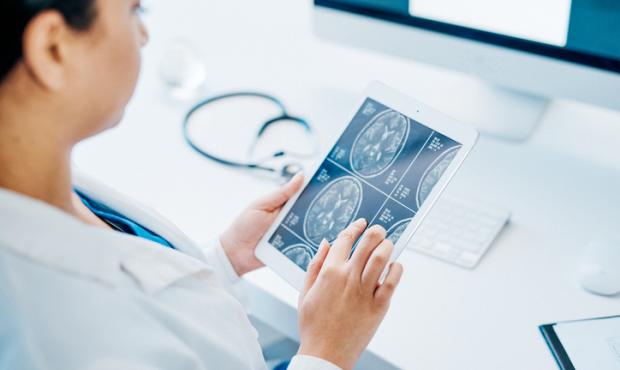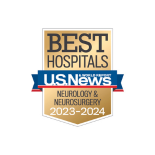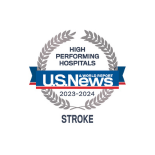Care You Can Trust When Every Second Counts
At Catholic Health hospitals across Long Island, our specialists rapidly respond when patients present with urgent cerebrovascular disease like a brain aneurysm or stroke. Our team of experts knows that time is critical and immediate care is required. We deliver the fastest and most accurate treatment.
We also help patients who require diagnosis and treatment for blood vessel malfunction, cerebral aneurysm, or any abnormality that can occur in the brain, spinal cord and neck. Our goal is to compassionately help patients and their caregivers navigate challenging diagnoses and the path to recovery.
Our Neurointervention Program
Catholic Health neurointervention specialists, who provide care at our hospitals across Long Island, are leaders in brain aneurysms, endovascular, stroke and other cerebrovascular pathology. Care is available 24-hours a day, seven days a week.
All Catholic Health hospitals are New York State Department of Health-designated stroke centers and meet the American Heart Association/American Stroke Association’s “Get with the Guidelines®” standards for rapid stroke diagnosis and stroke treatment.
The majority of our treatments are minimally invasive and use the latest, most advanced technology. Our neurointervention specialists thread micro-catheters through blood vessels to locate blood clots and dissolve or remove them. This allows numerous vascular diseases of the head, neck, brain and spine to be successfully treated without conventional surgery. Before treatment, patients are advised of risks and benefits and guided through the process with care and compassion.
Catholic Health's neurointerventional treatments and procedures include:
- Arteriovenous malformation. (An abnormal connection between blood vessels. Most often they form in or around the brain and along the spinal cord.)
- Spinal arteriovenous malformation/fistula
- Arteriovenous fistula. (An abnormal connection between an artery and a vein.)
- Carotid endarterectomy. (Treats carotid artery disease.)
- Carotid stenosis. (A narrowing of the carotid arteries.)
- Carotid stenting
- Cavernous malformation. (An abnormally formed blood vessel.)
- Cerebral angiogram
- Endovascular coiling
- Endovascular embolization
- Endovascular thrombectomy for ischaemic stroke
- Intracranial aneurysms
- Moyamoya disesase. (A chronic and progressive condition of the arteries in the brain.)
- Stroke care
- Subarachnoid hemorrhage
- Carotid artery stenosis is narrowing of the vessel due to atherosclerotic plaque caused by fat, cholesterol and calcium. The carotid artery is located on each side of the neck and permeates the front part of your brain.
- Carotid artery stenosis is usually diagnosed by ultrasound, CTA (computed tomography angiography), MRA (magnetic resonance angiogram) or cerebral angiogram.
- Risk factors include high blood pressure, diabetes, high cholesterol, cigarette smoking, sedentary lifestyle and obesity.
- When pieces of the plaque break off, clots are formed, which can block blood vessels in the brain. This results in a stroke or a transient ischemic attack.
- If the carotid artery stenosis becomes severe, patients are at higher risk of stroke or transient ischemic attack. Symptoms include trouble speaking, facial droop, weakness or numbness in extremities.
- A cerebral aneurysm (brain aneurysm) is a weak spot of a blood vessel (artery) in the brain that bulges out.
- Saccular aneurysm, also referred to as a “berry aneurysm,” is a round sac that comes off the artery.
- Fusiform aneurysm is an aneurysm that bulges on all sides of the artery.
- Brain aneurysms are frequently diagnosed incidentally during workup for other medical conditions.
- Risk factors for developing a brain aneurysm include genetics such as connective tissue disorders that weaken the blood vessels or family history, polycystic kidney disease and cigarette smoking.
- Risk factors related to aneurysm rupture include untreated high blood pressure, smoking, aneurysm size and family history.
- Brain aneurysms can become symptomatic if they are large, compressing a nerve or prior to rupture. Symptoms include headaches, double vision, extremity weakness or sensory changes.
- If a brain aneurysm ruptures, patients develop a special pattern of bleeding in the brain also known as subarachnoid hemorrhage. In that setting, patients can present with sudden “worst headache of life,” vision changes, sensitivity to light, nausea/vomiting, loss of consciousness or weakness in extremities.
- Arteriovenous malformation (AVM) is an abnormal tangle of blood vessels that has an irregular connection between the arteries and veins in the brain or spine. The arteries (high pressure system) are directly connected to the veins (low pressure system) without the middle connection—the capillary system—that normally decreases the pressure of the blood.
- Over time the blood vessels within the AVM become weakened and cause rupture and bleeding in the brain.
- If an AVM ruptures, symptoms include headache, seizures, weakness in extremities, vision changes, dizziness or speech difficulties. Symptoms are variable depending on the location of the AVM.
- Moyamoya disease is a cerebrovascular disorder that affects the blood vessels in the brain and causes them to narrow or constrict, which limits the flow of oxygen and blood. Other blood vessels are formed to increase circulation to the affected area—these vessels are small and become easily occluded.
- Moyamoya means “puff of smoke” in Japanese and describes the look of the blood vessels on angiographic imaging.
- The cause of the disease is unknown but is more common in Japan, Korea and China.
- Risk factors include familial history, Asian decent and female.
- Moyamoya is diagnosed during workup for cause of a stroke or recurrent transient ischemic attacks.
- Symptoms are those of a stroke including, but not limited to, trouble speaking, facial droop, weakness or numbness in extremities, dizziness or difficulty walking.
Care Across Long Island
Nassau County
St. Francis Hospital & Heart Center® (Roslyn, NY)
- Designated by the Joint Commission and New York State Department of Health as a Thrombectomy Capable Stroke Center—capable of mechanical thrombectomy and stabilizing and providing emergency care for patients with an acute stroke.
-
In 2023, 100% of eligible acute ischemic stroke patients were treated with mechanical endovascular therapy. Of those patients, 90% were successfully revascularized. The death rate within 24 hours of undergoing a diagnostic cerebral angiogram was 0%.
Suffolk County
Gary H. Richard and Family Stroke & Brain Aneurysm Center of Long Island (West Islip, NY)
- Joint Commission and Department of Health Certified Comprehensive Stroke Center
- Regional/tertiary care center for neuroscience with a dedicated Neuro Intensive Care Unit (ICU) and step-down unit
- Staff of cerebrovascular neurologists on site
Related Services
Neurointervention Services
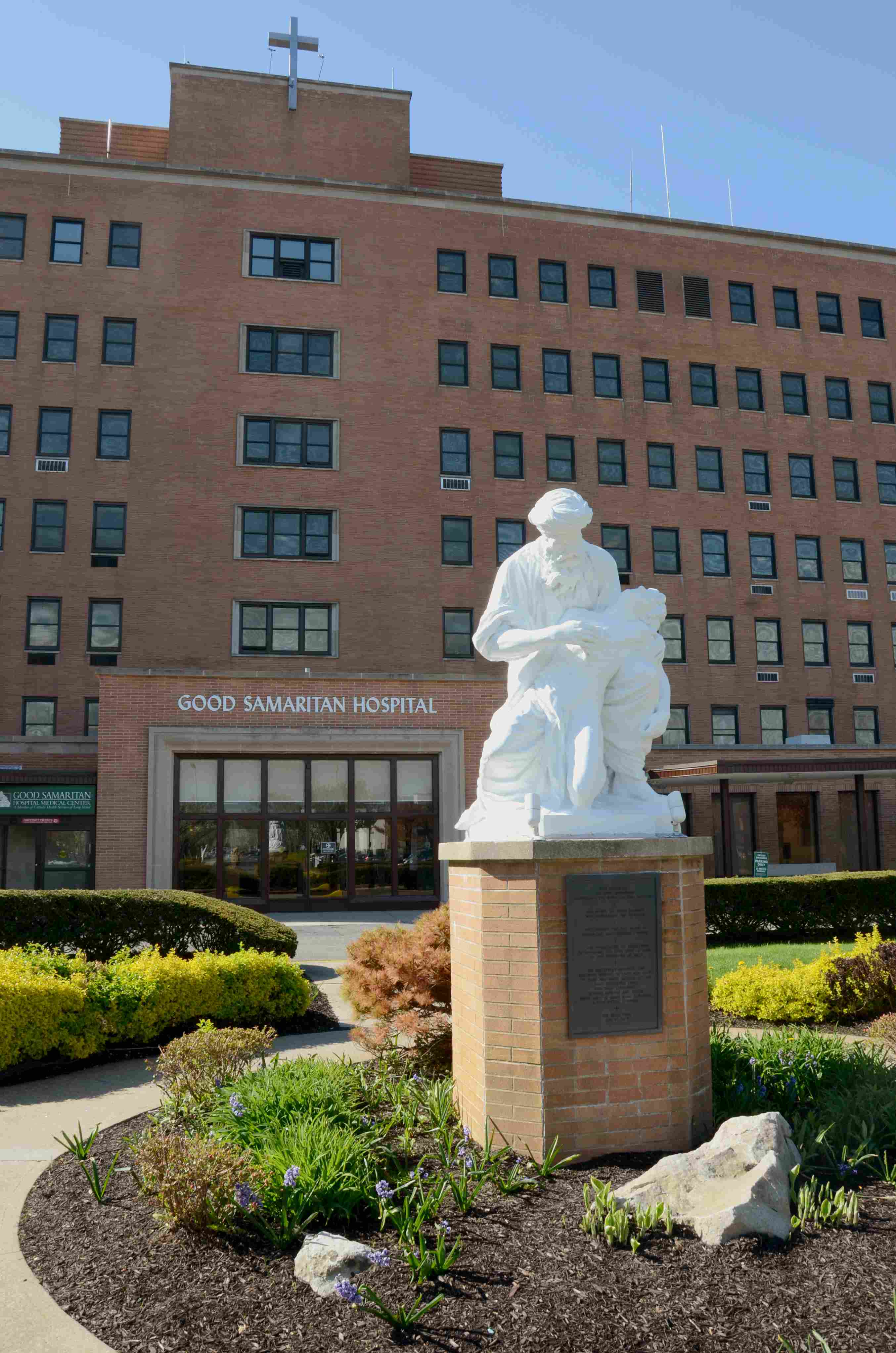
Good Samaritan University Hospital
West Islip, NY Hospital
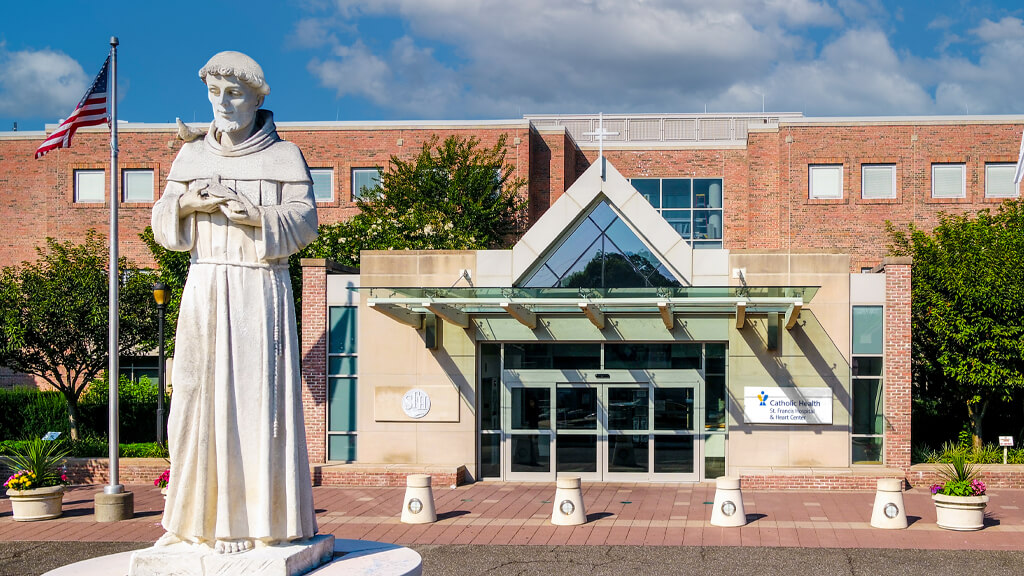
St. Francis Hospital & Heart Center®
Roslyn, NY Hospital Heart Center

